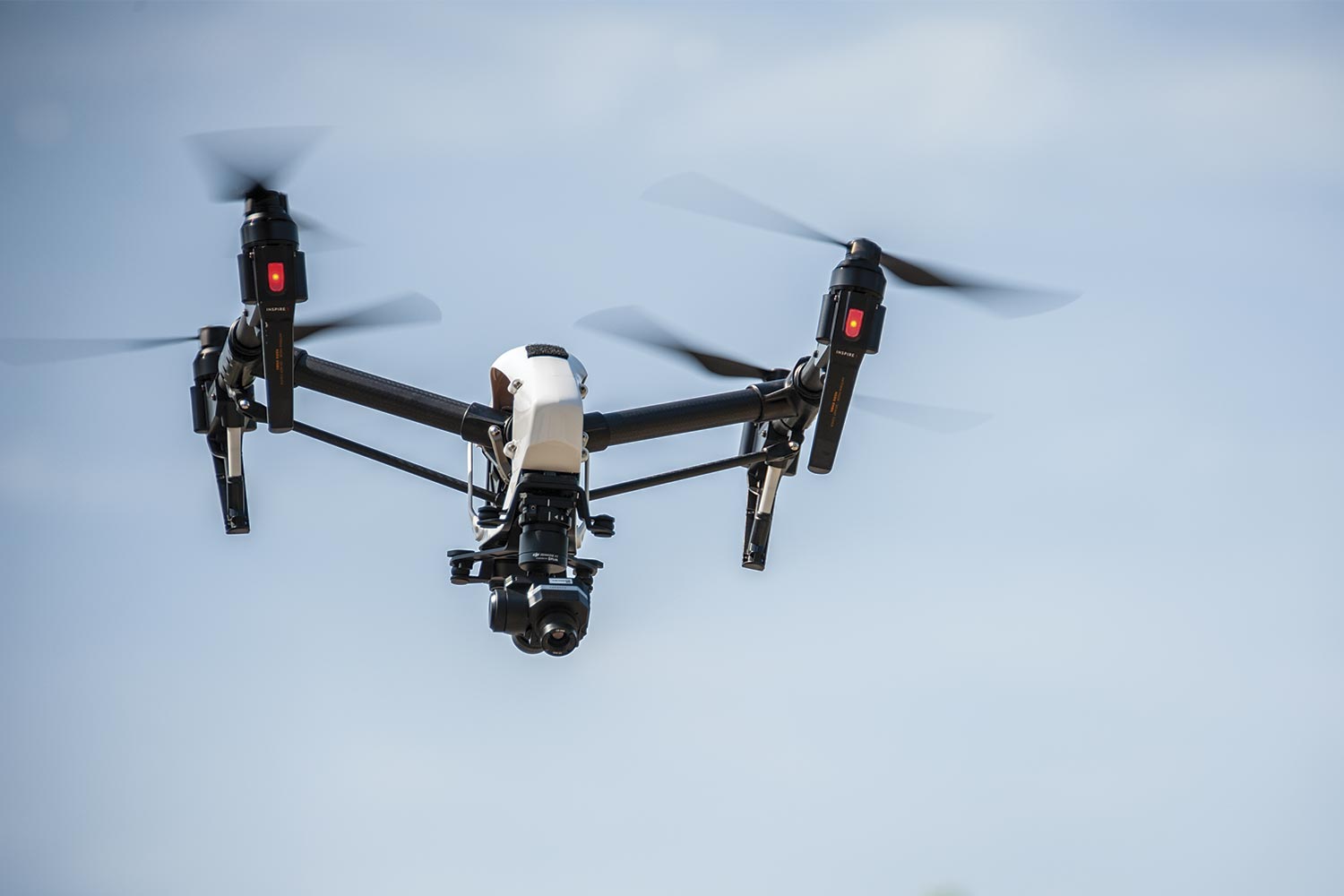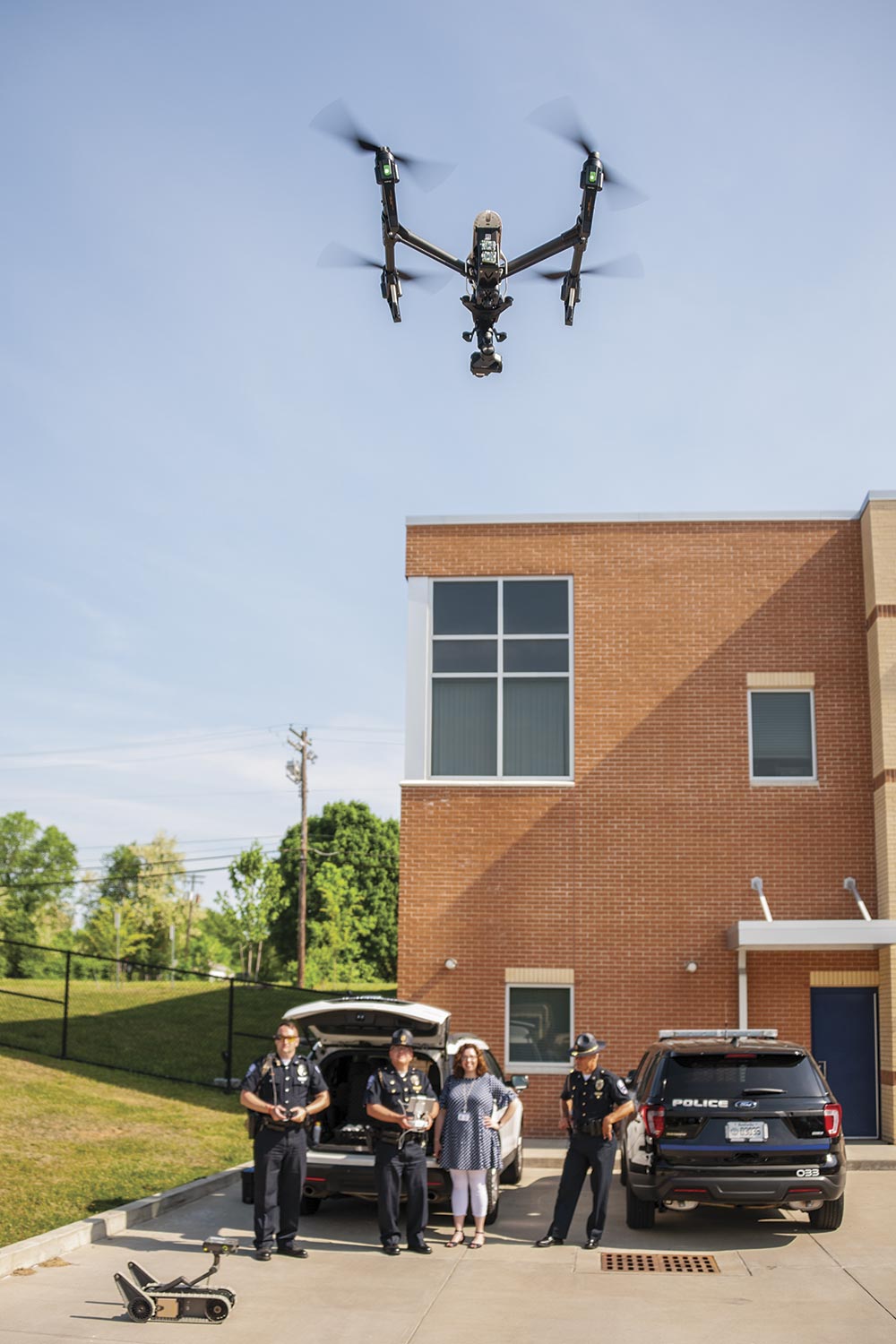Drone Age
During the past decade, unmanned aerial vehicles (UAV), more commonly known as drones, have become more prevalent throughout the commonwealth’s skies. A few years ago, the proliferation of drones exploded through their availability for purchase at electronic stores and online retailers. Drones are used by a wide range of individuals and organizations, ranging from hobbyists and farmers to corporations and the U.S. armed forces.
Law enforcement agencies throughout the commonwealth have started to utilize drones for various purposes. Those include traffic management, crowd control, search and rescue operations, crime-scene photography and detecting criminal activity.
As with any emerging technology, concerns have arisen regarding where drones can, and should, be utilized. Drone usage has created legal issues concerning trespassing, property damage and privacy rights. To address these issues, federal and state lawmakers have enacted laws governing their operation.
Law enforcement agencies should be aware of such laws and regulations.
With respect to federal law, the Federal Aviation Administration (FAA) is responsible for regulating the safe and efficient flow of air traffic in the U.S. Accordingly, law enforcement agencies must abide by FAA rules.
To operate a drone, law enforcement must follow Small Unmanned Aircraft Rule Part 107. Under Part 107, unmanned aircraft must weigh less than 55 pounds. The drone must remain within sight of the remote pilot and the person manipulating the drone’s flight controls.
Drones are limited to daylight operations, or civil twilight (30 minutes before official sunrise to 30 minutes after official sunset) if equipped with appropriate anti-collision lighting. Drones must yield right-of-way to other aircraft and operate at a maximum ground speed of 100 mph. Drones must remain within an altitude of 400 feet above a structure or ground level.
Law enforcement should be cognizant of security-sensitive-airspace restrictions or temporary flight restrictions prohibiting operation of a UAV in a designated area, as published on www.faa.gov. Federal law prohibits drones operating within a three-nautical-mile radius of stadiums or venues hosting NCAA football games or NASCAR Sprint Cup, Indy Car or Champ Series races. This rule applies one hour before and ends one hour after the scheduled time of such events.
Finally, Part 107 requires UAV used for recreational, governmental or commercial purposes to be registered with the FAA. Registration costs $5 per drone and is good for three years.
New Kentucky Drone Law
During its 2018 Regular Session, the Kentucky General Assembly enacted House Bill 22, creating several statutes governing drone usage by law enforcement. House Bill 22 provides the first definition of a drone in the Kentucky Revised Statutes. KRS 446.010(57) defines a UAV as an “aircraft that is operated without the possibility of direct human interaction from within or on the aircraft and includes everything that is on board or otherwise attached to the aircraft and all associated elements, including communication links and the components that control the small unmanned aircraft, that are required for the safe and efficient operation of unmanned aircraft in the national airspace system.”
Georgetown Police Department purchased a drone in 2017. Officers trained and assigned to the department’s aviation unit have used the equipment in law enforcement operations as well as for community relations events. (Photo by Jim Robertson)
House Bill 22 also created KRS 500.130, which governs the use of drones in the commonwealth. It permits businesses to use drones for legitimate business purposes. The statute also provides specific governance regarding law enforcement drone usage. This statute, entitled the “Citizens’ Freedom from Unwarranted Surveillance Act,” was designed to balance a citizen’s right to be free from unreasonable searches and seizures with the needs of law enforcement.
KRS 500.130(5) specifically provides that, “no law enforcement agency, or agent thereof, shall use an unmanned aircraft system to conduct a search unless authorized under the Fourth Amendment to the United States Constitution and Section 10 of the Kentucky Constitution. If the search is conducted pursuant to a warrant, the warrant shall specifically authorize the use of an unmanned aircraft system.”
While KRS 500.130(5) requires law enforcement to obtain a search warrant before utilizing a drone to search a citizen’s property, KRS 500.130(6) authorizes law enforcement to use a UAV for legitimate government purposes.
Under KRS 500.130(8), no evidence obtained or collected as a result of drone use shall be admissible as evidence in any civil, criminal or administrative proceeding within the state to enforce state or local law, except for evidence collected as permitted by KRS 500.130(6).
When law enforcement uses a UAV, KRS 500.130(7) mandates that drones “shall be operated in a lawful manner and shall minimize data collection on non-suspects” with the disclosure of such data prohibited except by order of a court. This statute also prohibits non-military UAVs from carrying a lethal payload.
House Bill 22 is significant because it created two criminal offenses within the Kentucky Penal Code concerning drone use. KRS 501.110 states that a person is guilty of an offense committed with a drone if the device is under the person’s control. The conduct would rise to criminal liability if performed by the person, unless the conduct consists of flying the drone through navigable airspace in the normal course of operation.
Additionally, House Bill 22 created KRS 525.015, which prohibits individuals from intentionally obstructing or disrupting emergency responders while performing official duties. Obstructing emergency responders is a violation for a first offense and a class B misdemeanor for any second or subsequent offense. House Bill 22 became law in July 2018.
As with any technology used by law enforcement, the development of policies and procedures governing drones for official purposes is vital to legal compliance and avoidance of liability. Agencies should adopt clear policies and procedures for drone usage to address privacy concerns.
At a minimum, policies and procedures addressing the UAVs should include a strong statement about the importance of preserving individual privacy rights. It should define how the agency would use drones for traffic control, search and rescue operations, photographing traffic accident scenes, evidence collection and surveillance. These policies and procedures also should address how evidence collected by drones will be maintained. Finally, policies and procedures should define how operators of the devices will be trained in accordance to federal and state law.
UAVs can be invaluable technology for law enforcement. But, care must be taken to ensure compliance with applicable state and federal laws.






